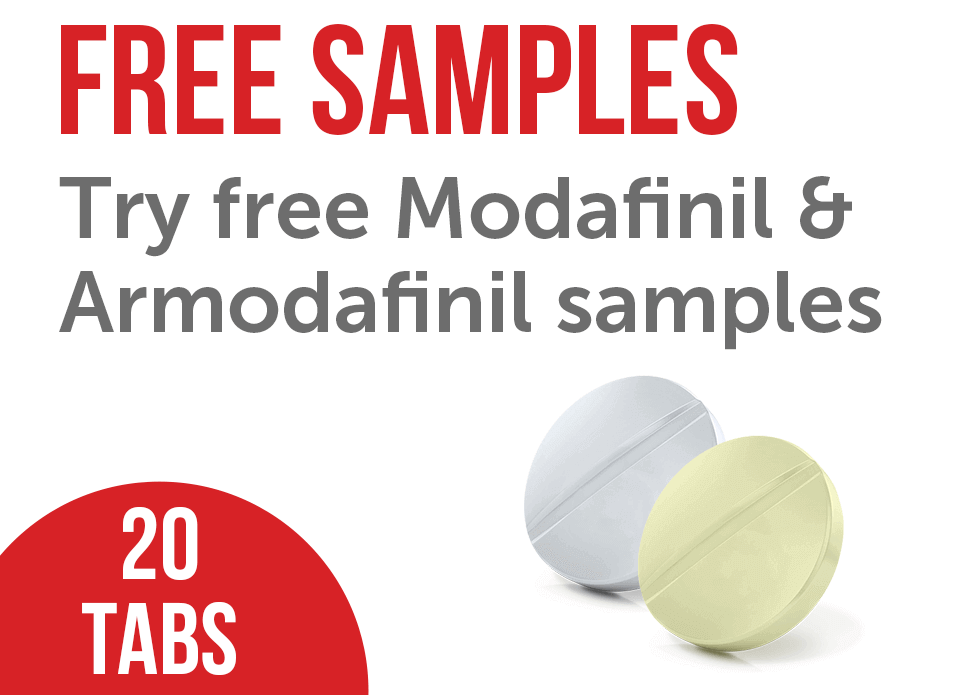In the realm of wakefulness-fostering agents, Wakix and modafinil are two of the most prominent options available. Understanding the unique attributes of each drug, including its mechanisms of action, uses, benefits, negative effects, and interactions, is crucial for patients and healthcare providers alike. But which is better than the other? This guide provides a comprehensive overview of Wakix vs modafinil, offering painstaking comparisons to help you make an informed preference.
The guide delves into what each med is, how they work, their typical dosages, and their safety profiles. Additionally, it explores how these drugs interact with food, alcohol, and other meds and provides information on where to purchase them online. Let’s dive in.
What Is Modafinil?
Modafinil is a prescription med categorized as a wakefulness-fostering agent. Approved by the Food and Drug Administration, it’s used for the therapy of narcolepsy, obstructive sleep apnea (OSA), and shift work sleep disorder (SWSD) [1]. Its exact mechanism of action isn’t completely understood, but it’s acknowledged to work primarily by inhibiting the reuptake of dopamine in the brain. This leads to increased concentrations of dopamine in synaptic spaces, promoting wakefulness by reducing the probability of sleep episodes during the daytime.
Modafinil also affects other neurotransmitters such as norepinephrine, histamine, serotonin, and orexin, contributing to its wakefulness-fostering effect, among other neurotransmitter benefits such as cognition.
Off-label, physicians may prescribe this medication to patients with conditions such as Parkinson’s disease, depression, jet lag, Alzheimer’s disease, and attention deficit hyperactivity disorder (ADHD), among others. Additionally, often referred to as the “world’s first safe ‘smart tab,’” it’s frequently utilized by healthy individuals from various backgrounds to augment cognitive capabilities and increase productivity. Here are some of the remarkable benefits reported by users from diverse fields, including business executives, students, workers, and top professionals [2][3]:
- improved wakefulness;
- enhanced cognition and creativity;
- augmented productivity;
- 12+ hours of intense focus and attention.
Modafinil undeniably offers a new level of mental clarity. It provides extraordinary energy, improved working & episodic memory, upgraded motivation, lessened fatigue, and boosted alertness when used appropriately. This med also aids in decision-making, planning, and fluid intelligence, among other mental functions.
What Is Wakix?
Wakix (pitolisant), the first-in-class H3R antagonist, is a newer medication approved for the therapy of excessive daytime sleepiness in adults with narcolepsy [4]. Unlike modafinil, which predominantly affects dopamine, Wakix is a histamine H₃ receptor antagonist/inverse agonist. This unique mechanism augments the release of histamine, a neurotransmitter that upgrades wakefulness.
Wakix operates by blocking the histamine H₃ receptors, which are inhibitory autoreceptors in the brain. This blocking results in the augmented release of histamine and other neurotransmitters, contributing to its wakefulness-fostering effects. By targeting histamine receptors, Wakix proffers a novel approach to handling narcolepsy symptoms [5]. Histamine helps maintain the high vigilance that’s required for cognitive processes.
Pitolisant has also been studied for its potential therapeutic benefits in conditions such as Parkinson’s disease, epilepsy, ADHD, Alzheimer’s disease, and dementia. The boost in histamine release associated with pitolisant is considered to augment cognitive function, which could be beneficial for disorders like ADHD, Alzheimer’s disease, and schizophrenia. The antagonism of H₃ receptors is presumed to improve various aspects of memory, including spatial memory, recognition memory, memory consolidation, and working memory [5].
Ultimately, the unique mechanism of action of Wakix offers an alternative for patients who may not respond well to other therapies. Additionally, Wakix doesn’t have the same potential for abuse and dependence as some other wakefulness-fostering agents, making it a safer long-term option for many patients.
Compare Wakix and Modafinil
How do modafinil and Wakix compare? What is the difference between these meds? Certainly, understanding these differences and similarities is important to help you make informed decisions about which medication might be more appropriate for your needs. Here’s a table comparing these meds:
| Feature | Wakix (Pitolisant) | Modafinil |
| Mechanism of action | histamine H₃ receptor antagonist/inverse agonist | dopamine reuptake inhibitor |
| Neurotransmitter target | histamine, acetylcholine, norepinephrine, dopamine | dopamine, histamine, norepinephrine, serotonin, orexin |
| Primary use | narcolepsy, excessive daytime sleepiness | narcolepsy, OSA, and SWSD |
| Approval year | 2016 (Europe), 2019 (US) | 1998 (US) |
| Dosage forms | tabs | tabs |
| Typical dosage range | 17.8 mg to 35.6 mg daily | 100 mg to 200 mg daily |
| Administration timing | morning | morning (or 1 hour before the work shift) |
| Onset of action | gradual (2–3 weeks of initiating treatment) [6]. For some people, it may take up to 8 weeks to acquire a response | rapid, within 30-60 minutes after ingestion |
| Half-life | for a single dose of 35.6 mg, the median half-life is approx. 20 hours (7.5 to 24.2 hours) | approximately 12-15 hours |
| Abuse potential & dependence | doesn’t appear to have abuse potential | low to moderate |
| Pregnancy category | category C | category C |
| Prescription requirement | yes | yes |
| How to take it? | once daily in the morning | once daily in the morning or 1 hour before work shift |
| Also known as | pitolisant | modafinil (Provigil®), armodafinil (Nuvigil®) and generics |
| What is it good for? | reducing excessive daytime sleepiness, improving wakefulness |
|
| Stacks well with | often taken alone; consult with a physician before stacking |
|
| Instructions to follow | take as prescribed, avoid exceeding the recommended dose, monitor heart health |
|
| Is it effective? | yes, particularly for narcolepsy and excessive daytime sleepiness | yes, for various sleep disorders and off-label uses like cognitive enhancement |
| Controlled substance? | no | yes, Schedule IV |
| Potential for misuse? | low | yes, prohibited by the WADA |
| Typical length of treatment | long-term treatment | long-term treatment |
According to research, pitolisant is comparable to modafinil in alleviating excessive daytime sleepiness (EDS) but outperforms modafinil in reducing cataplexy, making it more effective for patients with narcolepsy type-1. While pitolisant shows a slight benefit in relieving EDS, both meds are equally effective in treating narcolepsy type-2 patients [7].
Consulting with a physician before using either drug can help determine which med aligns best with your specific medical needs and lifestyle preferences.
Wakix vs Modafinil: Difference Between…
What are the key differences between Wakix and Modafinil? To make a better judgment, let’s focus on critical aspects such as dosages, negative effects & safety, and interactions with food, alcohol, and other meds. Understanding these differences is vital to making informed decisions about treatment options.
Dosages
The recommended starting dosage for Wakix is typically 8.9 mg once daily, which can be increased based on the patient’s response and tolerability. The maximum recommended dose is 35.6 mg per day. It’s usually taken in the morning to minimize the risk of insomnia. Dosage adjustments are made gradually, and patients are advised to follow their physician’s instructions carefully. Take note that it may take up to two months for some patients to acquire a clinical response. The med is contraindicated in patients with extreme hepatic impairment.
Besides, modafinil is commonly prescribed in dosages of 100 mg to 200 mg per day, taken once daily. For narcolepsy and OSA, it’s usually taken in the morning, while for SWSD, it should be taken about an hour before starting a work shift. This dosage and timing are similar to taking it for cognitive purposes as a healthy individual. For other conditions, take it as prescribed by your physician.
For new modafinil users, start with a 100 mg dose, which can be achieved by accurately splitting a 200 mg tab in half. The maximum recommended daily dose for modafinil is 400 mg, as per physician guidelines. Take note that modafinil dosage may be adjusted based on the individual’s response and tolerability. Adhere to the prescribed regimen to avoid potential side effects.
Side Effects & Safety
Common negative effects of Wakix include nausea, anxiety, insomnia, upper respiratory tract infection, headache, and dizziness. These side effects are generally mild and tend to diminish over time as the body adjusts to the medication. Nonetheless, serious negative effects such as severe allergic reactions, QT prolongation (a heart rhythm disorder), and psychiatric symptoms like depression and suicidal thoughts can occur. Closely monitor for any severe reactions, particularly during the initial stages of treatment.
Although modafinil is safe and well-tolerated, side effects can transpire. Some of the negative effects include nervousness, dizziness, headache, nausea, and difficulty sleeping. These negative effects are commonly mild but can be more conspicuous in some individuals. Serious negative effects, though irregular, include severe skin reactions (such as Stevens-Johnson syndrome), mental/mood changes (like depression, agitation, hallucinations, and suicidal thoughts), and severe allergic reactions. This isn’t a thorough list [8]. If taking any med, report any severe negative effects to your physician promptly.
Interaction with Food, Alcohol, and Other Meds
Wakix can interact with food, alcohol, and other meds. Alcohol may exacerbate the negative effects of Wakix, such as dizziness and drowsiness. Additionally, Wakix can interact with meds that affect the central nervous system and those that prolong the QT interval. Contraindicated meds include strong CYP2D6 inhibitors, strong CYP3A4 inducers, sensitive substrates, and histamine-1 (H₁) receptor antagonists [9]. Patients should inform their physician about all the meds and supplements they are taking to avoid probable interactions and guarantee the safe use of Wakix.
Besides, modafinil can also interact with food, alcohol, and other meds. Alcohol can intensify modafinil’s negative effects, particularly nervousness and insomnia. Furthermore, the med can influence the metabolism of various drugs, including certain antidepressants, anticoagulants, CYP2C19 & CYP3A4/5 substrates, birth control meds, monoamine oxidase inhibitors, some antibiotics, and anticonvulsants. Discuss all potential interactions with a physician to ensure safe and effective use.
Where to Buy These Tablets Online?
In many countries, obtaining the “smart drug” legally typically requires a doctor’s prescription due to concerns about potential misuse and dependence. Medical oversight is vital to guarantee safe and efficacious usage. Although some online pharmacies, particularly those based in India, might sell modafinil without a prescription, exercising caution is paramount to avoid counterfeit or harmful medication.
For the best modafinil vendor, ModafinilXL.com, BuyModafinilOnline.com, and ModafinilUSA.com are highly regarded in the nootropic community for their reliable service and high-quality products. They all source their modafinil from reputable pharmaceutical companies, ensuring you receive genuine medication. These platforms offer a wide range of payment options, including major credit cards, PayPal, and cryptocurrencies like Bitcoin, with a special 20-23% discount for Bitcoin payments.
All these vendors provide various shipping methods, including Express Mail Service (EMS) and Registered Airmail. EMS shipping typically ensures delivery within 7 to 12 business days to the USA, UK, Australia, and New Zealand, while Registered Airmail might take 10 to 18 business days. For US customers, these vendors also offer USPS Priority Mail for faster delivery, usually within 3 to 4 business days or overnight, depending on the location.
Moreover, these vendors are known for their exceptional customer service. They offer free samples of their best-selling nootropics, allowing new users to try the products before making a full purchase. They also have robust refund and reshipment policies in case of lost or delayed orders, ensuring customer satisfaction. Additionally, frequent promotional deals, discounts, and combo packs help customers get the best value.
HighStreetPharma (HSP) is another excellent option for purchasing modafinil online. It’s known for its extensive product range and high-quality meds sourced from reputable manufacturers. The vendor ships meds from India or Singapore, using Post/Swiss Post/DHL for Express shipping and Airmail for Standard shipping. Deliveries to the UK, the USA, Australia, and Europe typically take 7 to 12 working days, while shipping to Japan can take 14 to 30 days due to stricter customs regulations. Shipping fee is $25 but free for orders over $150. HSP also provides a 100% money-back guarantee for missing or damaged parcels, offering either a full refund or reshipment, though this guarantee doesn’t apply to other countries mentioned on its website.
HSP accepts a variety of payment options, including eCheck, PayPal, cryptocurrency, Visa, MasterCard, and Amazon/Walmart gift cards. Using cryptocurrency enhances anonymity and offers additional incentives, such as a 10% discount, free shipping, and 30% extra modafinil tablets for crypto payments. There’s also a 10% returning shopper discount.
For Wakix, the med is readily available on Amazon, which provides a convenient and trustworthy platform for purchasing meds. Amazon’s user reviews and ratings help ensure that you are buying from reputable sellers. The platform also offers various shipping options and typically delivers within a few days, depending on your location and the seller’s policies. Numerous other online pharmacies also offer Wakix. It’s crucial to ensure that the chosen e-pharmacy is legitimate.
Final Thoughts: Wakix vs. Modafinil
Both Wakix and modafinil are effective meds for heightening wakefulness and managing conditions like narcolepsy. While modafinil primarily affects dopamine levels to enhance wakefulness, Wakix works through histamine receptors, offering an alternative for those who may not respond well to modafinil. This guide covered their mechanisms of action, typical dosages, negative effects, and interactions. Additionally, it provided information on where to purchase these meds online. At best, before using any med, consult with a physician to determine which med is best suited for you.
References
- Modafinil. Retrieved: June 1, 2024. Wikipedia.org.
- Practical Use and Risk of Modafinil, a Novel Waking Drug. By Dongsoo Kim. Published: February 22, 2012. Ncbi.nlm.nih.gov.
- The off-prescription use of modafinil: An online survey of perceived risks and benefits. By Rachel D. Teodorini, Nicola Rycroft, and James H. Smith-Spark. Published: February 5, 2020. Journals.plos.org.
- Pitolisant. Retrieved: June 1, 2024. Wikipedia.org.
- Pitolisant and Other Histamine-3 Receptor Antagonists—An Update on Therapeutic Potentials and Clinical Prospects. By Victoria Harwell and Pius S. Fasinu. Published: September 1, 2020. Ncbi.nlm.nih.gov.
- Time to Onset of Response to Pitolisant for the Treatment of Excessive Daytime Sleepiness and Cataplexy in Patients With Narcolepsy: An Analysis of Randomized, Placebo-Controlled Trials. By Nathaniel F. Watson, Craig W. Davis, et al. Published: November 25, 2021. Ncbi.nlm.nih.gov.
- Comparison of modafinil and pitolisant in narcolepsy: a non-inferiority meta-analytical approach. By Philippe Lehert and Cassandra Szoeke. Published: July 8, 2020. Ncbi.nlm.nih.gov.
- Modafinil – Uses, Side Effects, and More. Retrieved: June 1, 2024. Webmd.com.
- Highlights of Prescribing Information (pdf). Retrieved: June 1, 2024. Wakix.com.








